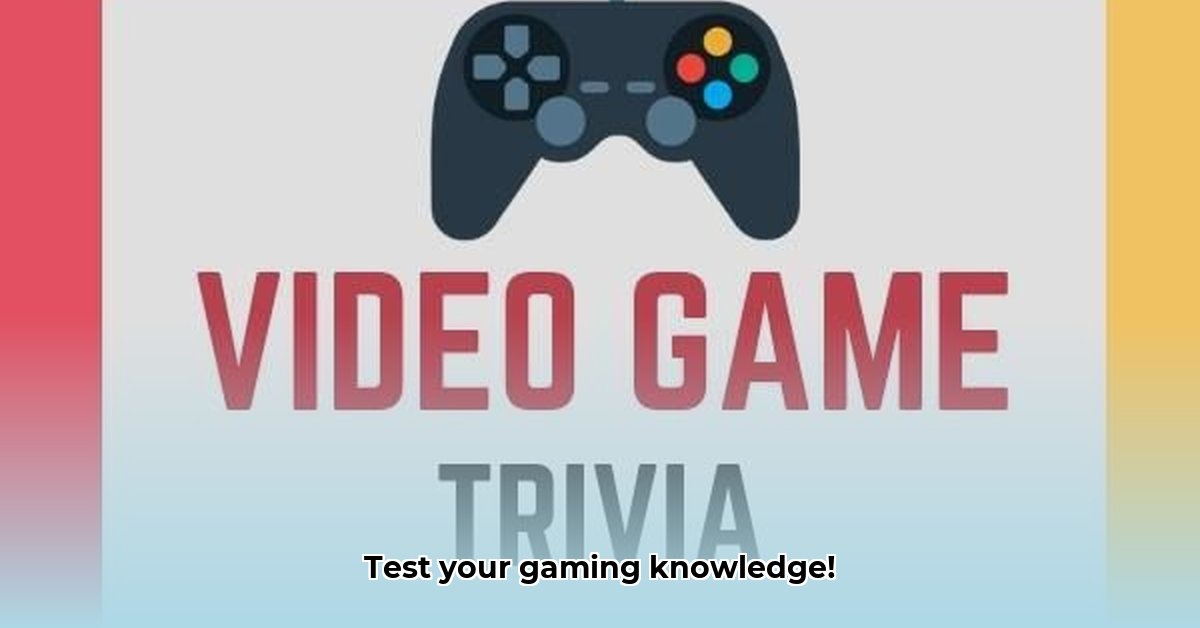Video games, once simple blips on a screen, now transport us to breathtakingly immersive worlds. This journey, from the coin-operated arcade cabinets to the sophisticated virtual landscapes we explore today, is a testament to technological ingenuity and creative vision. Join us on a trivia-laden expedition through gaming history, revisiting iconic moments and exploring the industry’s evolution.
The Dawn of Digital Play: Arcade Ancestry and Console Beginnings
Question: What was the name of the groundbreaking 1972 game that catapulted video games into the mainstream, setting the stage for a multi-billion dollar industry?
- Answer: Pong
- Explanation: Pong’s elegantly simple gameplay, two paddles volleying a digital ball across the screen, captivated audiences and proved the commercial viability of interactive entertainment. Its success ignited a spark that would ignite the gaming revolution. Atari’s Pong wasn’t the first video game, but its accessibility and addictive nature made it a household name, paving the way for the home console market.
Question: In the wake of the 1983 video game crash, which 8-bit console resurrected the industry, introducing players to now-legendary characters like Mario, Luigi, and Link, forever changing the landscape of entertainment?
- Answer: Nintendo Entertainment System (NES)
- Explanation: The NES, with its stringent quality control measures and a diverse library of groundbreaking titles like Super Mario Bros. and The Legend of Zelda, revitalized the industry and established Nintendo as a dominant force. It wasn’t just about the games; the NES introduced a new level of control and interactivity, setting the standard for future consoles. The console’s cartridge-based system also allowed for a wider variety of games and genres, further boosting its appeal.
The 16-Bit Surge and Beyond: Intensified Competition and Genre-Defining Titles
Question: Which fierce rivalry between two gaming giants defined the early 1990s, pushing the boundaries of 16-bit technology and introducing iconic mascots like Sonic the Hedgehog and Mario to a new generation?
- Answer: Sega Genesis vs. Super Nintendo Entertainment System (SNES)
- Explanation: This “console war” between Sega and Nintendo fueled innovation, resulting in a golden age for gaming. The Genesis, with its emphasis on speed and attitude (thanks to Sonic), and the SNES, known for its vibrant graphics and innovative gameplay, offered distinct experiences that broadened the gaming audience. This competition led to advancements in sound, visuals, and gameplay mechanics, shaping the future of console development.
Question: Which genre-defining first-person shooter (FPS), released in 1998, revolutionized storytelling in video games, seamlessly integrating narrative and gameplay through innovative level design and immersive environments?
- Answer: Half-Life
- Explanation: Developed by Valve, Half-Life set a new benchmark for FPS games, discarding cutscenes in favor of a continuous, immersive experience. Its compelling storyline, realistic physics engine, and intelligent AI opponents set the stage for future narrative-driven FPS titles. The game’s influence can be seen in countless subsequent games, solidifying its place as a landmark achievement.
The Digital Domain: Online Worlds, Mobile Gaming, and the Metaverse
Question: Which massively multiplayer online role-playing game (MMORPG), launched in 2004, pioneered the concept of persistent virtual worlds, captivating millions with its expansive lore, dynamic gameplay, and thriving online community?
- Answer: World of Warcraft
- Explanation: World of Warcraft (WoW) wasn’t the first MMORPG, but its accessibility and polished gameplay brought the genre into the mainstream. WoW created a persistent virtual world where players could interact, form guilds, engage in epic quests, and forge lasting friendships. Its success demonstrated the power of online communities and paved the way for the metaverse concepts we see emerging today. The game’s ongoing content updates and expansions also showcased a new model for long-term player engagement.
Question: Which 2016 mobile game ingeniously blended augmented reality (AR) technology with location-based gameplay and the beloved Pokémon franchise to become a global phenomenon, capturing the imaginations of millions worldwide?
- Answer: Pokémon GO
- Explanation: Pokémon GO became an instant cultural phenomenon, encouraging players to explore their real-world surroundings in search of virtual creatures. This innovative use of AR technology brought the Pokémon universe to life in a way never before seen, blurring the lines between the digital and physical worlds. Its success highlighted the potential of mobile gaming and location-based entertainment, inspiring a wave of similar AR experiences.
The Horizon of Interactive Entertainment: A Glimpse into Gaming’s Future
From Pong’s humble beginnings to the complex narratives and stunning visuals of today’s games, the evolution of video games has been nothing short of extraordinary. As technology continues to advance—with virtual reality (VR), augmented reality (AR), and artificial intelligence (AI) playing increasingly significant roles—the potential for future gaming experiences is vast and uncharted. Will we see fully immersive virtual worlds indistinguishable from reality? Will AI generate dynamic and unpredictable narratives? The next chapter in the video game saga promises to be even more revolutionary than the last.
- Revolution Space: Disruptive Ion Propulsion Transforming Satellites - April 24, 2025
- Race Through Space: Fun Family Game for Kids - April 24, 2025
- Unlocking the Universe: reading about stars 6th grade Guide - April 24, 2025
















